Bournemouth U’s Sascha Dov Bachmann (EBC) and Prof Joachim Sanden (Germany, Luneburg) presented a paper on National Security and Public Health at the IALS – SAS in London (http://events.sas.ac.uk/events/view/15689). Their topic “The Right to Liberty and Security, Public Health and Disease Control”uses the examples of the Escherichia coli (E. coli O157) outbreak in Surrey in August 2009 and the EHEC-O104:H4 outbreak 2011 in Germany by Fenugreek Sprouting seeds, to discusses potential human rights implications of food safety hazards across the food chain (see the European crisis management according to Art. 10 of EC regulation 178/2002 and the U.K. Public Health (Control of Disease) Act 1984, the Public Health (Infectious Disease) Regulations 1988 and the Food Safety Act 1990). Both authors also touched upon potential legal vacuums and loopholes around public and civil safety and security when dealing with new health and environmental threats such as Avian or Swine influenza (flu), which can lead – especially if used as a potential means of bioterrorism – to a national health and security crisis and even mutate into an international pandemic. Consequently, any emergency responses by a state can also directly affect human rights.
Category / Featured
Neuroscience@BU seminar: “Emergent oscillatory activity in the cerebral cortex” Friday the 2nd of May 14:00 PG 10 (Poole House)
Next Friday the 2nd of May at 14:00 h in PG10, we will have a research seminar in neuroscience entitled “Emergent oscillatory activity in the cerebral cortex”.
Our guest is Prof. Maria Victoria Sanchez-Vives, http://www.sanchez-vives.org/, ICREA Research Professor at the IDIBAPS (Institut d’Investigacions Biomediques August Pi i Sunyer) in Barcelona, head of the Systems Neuroscience group.
Prof. Maria Victoria Sanchez-Vives has published a number of influential papers in journals like e.g. Science, Nature Neuroscience or PNAS and is currently the Chief Editor of Frontiers in Systems Neuroscience. She has been funded by Human Frontier Science Program, national and international agencies and has been partner in six European Projects. She is currently coordinator of the FET EU project CORTICONIC.
Her main interests include how neuronal and synaptic properties as well as connectivity determine the emergent activity generated by neuronal networks. The integration of the cortical information giving rise to bodily representation and the combination of brain-computer interfaces and virtual reality for understanding these processes, is another research line of her group.
We strongly suggest not to miss the opportunity to attend to this seminar. Afternoon cakes, coffee and tea will be served during the event.
Best wishes, Emili
Emili Balaguer-Ballester, PhD
Faculty of Science and Technology , Bournemouth University
Bernstein Center for Computational Neuroscience, University of Heidelberg
———————————
Title: “Emergent oscillatory activity in the cerebral cortex”.
Abstract: “Understanding complex systems like brain networks is a challenge. Cortical networks can perform computations of remarkable complexity, accounting for a large variety of behaviours and cognitive states. At the same time, the same networks can engage in stereotypical patterns of spatio-temporal activation, such as the ones that can be observed during sleep, anaesthesia and in cortical slice. Collective phenomena emerging from activity reverberation in cortical circuits at different spatio-temporal scales results in a rich variety of dynamical states. Slow (around or below 1 Hz) and fast (15-100 Hz) rhythms are spontaneously generated by the cortical network and propagate or synchronize populations across the cortex. This is the case even in isolated pieces of the cortical network, or in vitro maintained cortical slices, where both slow and fast oscillations are also spontaneously generated. The similarity between some of these patterns both in vivo and in vitro suggests that they are somehow a default activity from the cortical network. We understand that these emergent patterns provide information on the structure, dynamics and function of the underlying cortical network and their alterations in neurological diseases reveal the circuits dysfunction”.
ARTS in Research (AiR) collaborative still accepting members
 We are still accepting participants interested in joining the new Arts in Research (AiR) Collaborative that met for the first time recently.
We are still accepting participants interested in joining the new Arts in Research (AiR) Collaborative that met for the first time recently.
At our first gatherings, there was great interest in the ‘next step’ or working with professionals from the arts to develop our arts-based academic work. One of the first projects that we are developing is a series of workshops over a year for academics who are interested in pursuing creative means of carrying out research and/or disseminating it, whether that be via lectures, presentations, publications or other means of diffusion to reach a wider public.
- One possibility, for example, is Creative Writing for Academics, an away day in a quiet place with an expert guide.
- Another is a day spent in TV production studios, particularly learning ways to edit video shot on still cameras, phones, ipads, etc.
- A third possibility being explored is a day at The Lighthouse, taking advantage of Lighthouse professionals to explore the use of drama, performance poetry, music, etc in academic work.
Read more about the principles behind AiR
The AiR Collaborative is based at HSC in the Centre for Qualitative Research, but is a cross-Schools cluster and is open to academics and post-grad students across both campuses.
The only requirement to join is to express your interest and send a ‘selfie’ to Kip Jones!
BU Researchers launch a new online copyright resource at the AHRC Creative Economy Showcase London

 Following the internal launch at BU on the 14th February 2014, BU Researchers at the Centre for Intellectual Property Policy and Management (CIPPM) launched the Copyrightuser.org at The Arts and Humanities Research Council (AHRC) Creative Economy Showcase.
Following the internal launch at BU on the 14th February 2014, BU Researchers at the Centre for Intellectual Property Policy and Management (CIPPM) launched the Copyrightuser.org at The Arts and Humanities Research Council (AHRC) Creative Economy Showcase.
The event was held at Kings Place, London, on Wednesday 12th March 2014. The Showcase demonstrated the outputs and innovations of AHRC investments in the Creative Economy through presentations, workshops and exhibitions. The sectors exhibited on the day, included fashion, design, video games, architecture, broadcasting, archives, digital technologies and dance.
Amongst the various funded initiatives showcased on the day, Copyrightuser.org held a prominent exhibition stand and exhibited the website which was complemented by large posters, bookmarks and myth/reality cards (illustrated below) which explained the most common myths about copyright.
This high-profile event was attended by over 450 delegates and included policy-makers, business leaders in the creative industries, knowledge exchange practitioners, directors of research in universities, senior representatives from partner organisations in the Creative Economy, other strategic funding agencies in the sector, representatives from the AHRC’s investments in the Creative Economy and other stakeholders.
Keynote speakers included amongst others Sebastian Conran (Designer), the Hon David Willetts (Minister of State for Universities and Science), Ed Vaizey MP (Minister for Culture, Communications and Creative Industries) and Professor Rick Rylance (CEO, AHRC).
Highlights from the day can be streamed here.
Copyrightuser.org was funded by the BU Fusion Investment Fund in 2012 and was developed by the Business School’s Centre for Intellectual Property Policy and Management (CIPPM) in collaboration with Centre for Excellence in Media Practice (CEMP). Following the success of the Fusion Funded project, the CIPPM-led team went on to secure RCUK funding provided by CREATe in August 2013 to extend the scope of the project. Phase II of the copyrightuser.org is now underway.
The launched online resource aims to make UK copyright law accessible to creators and members of the public. This 1-minute video captures the concept behind the Copyrightuser.org project.
Using quantitative and qualitative methods the site aims to provide answers to the most pressing concerns that creators and the public have about copyright law. To achieve these aims, interviews with creators where conducted and a video for each creative sector was produced demonstrating their thoughts and questions about copyright, see the musicians video here for example. Secondly, 200 frequently asked questions posted by users online were sourced, analysed and coded down to the 20 most common.
The Copyrightuser.org has so far been received very well as evidenced by the positive feedback from various organisations, individuals, legal professionals and the creative industries.
During the launch, the website received 232 visits; and has now received over 1,558 visits to date.
Please also visit our twitter page – @copyrightuser to keep up with the Copyrightuser.org developments.
The copyrightuser.org team consists of:
Dr. Dinusha Mendis (Principal Investigator & Co-Director CIPPM)
Mr. Bartolomeo Meletti (Lead Multimedia Producer and CIPPM Research Assistant)
Ms. Hayleigh Bosher (PhD Candidate (Copyright) and CIPPM Research Assistant)
Professor Martin Kretschmer (Principal Investigator & Director CREATe)
Dr. Kris Erickson (Co-Investigator, CREATe).
The team is further assisted by a Production Team consisting of Marco Bagni (Art Direction, Design and Animation), Sar:co (Music and SoundFX), Davide Bonazzi (Illustrations) amongst others and an Editorial Board consisting of Professor Maurizio Borghi (Director, CIPPM); Professor Ruth Towse (Co-Director, CIPPM); and Professor Ronan Deazley (Professor of Copyright Law, University of Glasgow) amongst others.
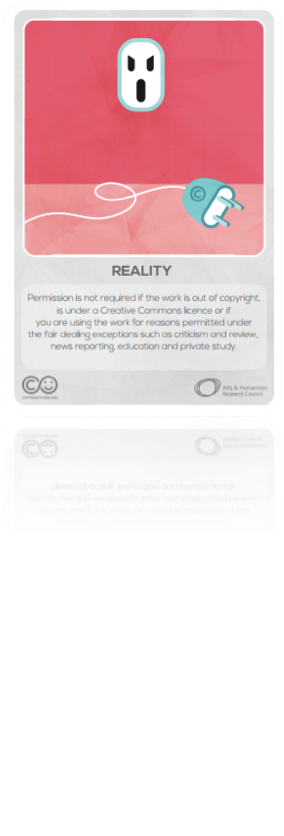

Centre for Qualitative Research (CQR) Refreshes Its Web Presence
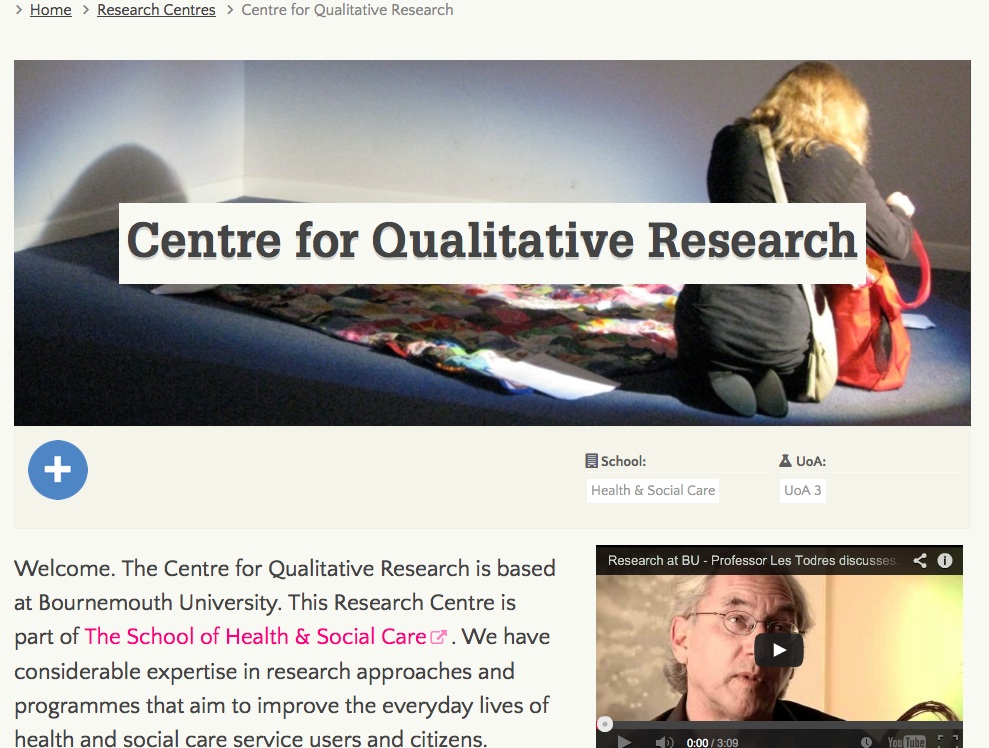 The Centre for Qualitative Research (CQR), a long-standing resource for research practice and postgraduate learning at BU, has recently undergone a ‘refit’ of its web pages. Content from the old site has been moved over to the new platform for Bournemouth University groups and centres. The new format now makes it possible to link with work taking place in other Schools and research sites. In addition, Impact, Public Engagement and Postgraduate Research links feature on every page.
The Centre for Qualitative Research (CQR), a long-standing resource for research practice and postgraduate learning at BU, has recently undergone a ‘refit’ of its web pages. Content from the old site has been moved over to the new platform for Bournemouth University groups and centres. The new format now makes it possible to link with work taking place in other Schools and research sites. In addition, Impact, Public Engagement and Postgraduate Research links feature on every page.
CQR is held in high esteem globally for its innovative work and commitment to qualitative research. The refreshed web pages provide an international ‘shop window’ for CQR, School of Health & Social Care and BU more generally in regards to cutting-edge qualitative work. CQR has always engaged across Schools at BU and welcomes new opportunities for collaborate efforts.
The new CQR pages include information, resources and links organised around the following areas of research:
- Humanising Health and Social Care
- Novel and Innovative Research Methodologies
- Performative Social Science
In addition, areas such as Biographic Narrative Interpretive Research, Cut-up Technique and Appreciative Inquiry are covered. A new page outlining the ‘Gay and Pleasant Land? Project and Rufus Stone’ has been added. The recently organised, cross-Schools ARTS in RESEARCH (AiR) collaboration is also featured.
The new web pages include new information and resources, links to further information and even videos for viewing pleasure! Last but not least, a photo has been added as a ‘Featured Image’ highlighting the essence of each page.
Have a look around this interesting site!
Neuroscience@BU seminars next week, Wednesday the 12th and Friday the 14th
Dear colleagues,
Next week we will have two thematic research seminars in neuroscience organized by Dr Julie Kirby and me.
-The first of the seminars of this series will take place next Wednesday the 12th of March, 15:00, P302 LT. The invited speaker is Dr Dimitris Pinotsis, http://iris.ucl.ac.uk/iris/browse/profile?upi=DPINO08.
Dr Pintosis obtained his PhD in September 2006 from the Department of Applied Mathematics and Theoretical Physics (DAMTP) of the University of Cambridge. After an EPRSC Research Fellowship and lectureship in Reading University he moved to UCL where he is working at the Welcome Trust Centre for Neuroimaging ; having secured funding from EPSRC and the Wellcome Trust.
Dr Pinotsis has a strong track record and a number of landmark publications in imaging neuroscience modelling; he is also the author of the most advanced versions of the state-of the art models for neuroimaging data, the dynamic causal models. I am familiar with Dimitris work and I very strongly encourage the attendance to researchers both in machine learning and in cognitive psychology.
The title of his exciting talk is “Electrophysiological Data and the Biophysical Modelling of Local Cortical Circuits”. “Dynamic Causal Modelling (DCM) is a general framework that allows for a formal (Bayesian) analysis of the properties of neuronal populations, based upon realistic biophysical models. In the past few years, a wide variety of such models has been implemented in the DCM framework. In this talk, I will first review some of these recent advances and then focus on models that allow one to infer spatial parameters of cortical infrastructures generating electrophysiological signals (like the extent of lateral connections and the intrinsic conduction speed of signal propagation on the cortex). I will try to highlight the links between different models and address how the experimental hypothesis or question asked might inform the choice of an appropriate model”.
-The second seminar of this series will take place on Friday the 14th of March, at 14:00 in K101. Our guest is Prof. Maria Victoria Sanchez-Vives, http://www.sanchez-vives.org/
Maria V. Victoria Sánchez-Vives, M.D., PhD in Neurosciences has been ICREA Research Professor at the IDIBAPS (Institut d’Investigacions Biomediques August Pi i Sunyer) in Barcelona since 2008, where she is the head of the Systems Neuroscience group. She is currently co-director of the Event Lab (Experimental Virtual Envir onments in Neuroscience and Technology).
After obtaining her PhD at the University of Alicante in Spain, MVSV was postdoctoral fellow/research associate at Rockefeller University (1993-1994) and Yale University (1995-2000). She next established her own laboratory at the Neuroscience Institute of Alicante (Consejo Superior de Investigaciones Científicas) while being Associate Professor of Physiology. Her independent research has been supported by national and international agencies. She has been funded by Human Frontier Science Program and has been partner in six European Projects. She is currently coordinator of the FET EU project CORTICONIC.
Her main interests include how neuronal and synaptic properties as well as connectivity determine the emergent activity generated by neuronal networks. The integration of the cortical information giving rise to bodily representation and the combination of brain-computer interfaces and virtual reality for understanding these processes is another research line of her group.
She is currently Chief Editor of Frontiers in Systems Neuroscience.
For information see www.sanchez-vives.org
Maria Victoria Sanchez-Vives is a renowned neuroscientist which has published a number of highly influential papers in journals like e.g. Science, Nature Neuroscience, PNAS or Journal of Neuroscience. I strongly encourage not missing the opportunity to attend to this seminar and to discuss perhaps potential synergies.
The title of her talk will be “Emergent oscillatory activity in the cerebral cortex”.
“Understanding complex systems like brain networks is a challenge. Cortical networks can perform computations of remarkable complexity, accounting for a large variety of behaviours and cognitive states. At the same time, the same networks can engage in stereotypical patterns of spatio-temporal activation, such as the ones that can be observed during sleep, anaesthesia and in cortical slice. Collective phenomena emerging from activity reverberation in cortical circuits at different spatio-temporal scales results in a rich variety of dynamical states. Slow (around or below 1 Hz) and fast (15-100 Hz) rhythms are spontaneously generated by the cortical network and propagate or synchronize populations across the cortex. This is the case even in isolated pieces of the cortical network, or in vitro maintained cortical slices, where both slow and fast oscillations are also spontaneously generated. The similarity between some of these patterns both in vivo and in vitro suggests that they are somehow a default activity from the cortical network. We understand that these emergent patterns provide information on the structure, dynamics and function of the underlying cortical network and their alterations in neurological diseases reveal the circuits dysfunction”.
If you would like to talk to the guests kindly let me know.
Best wishes, Emili
Emili Balaguer-Ballester, PhD
Faculty of Science and Technology , Bournemouth University
Bernstein Center for Computational Neuroscience, University of Heidelberg
Abseil and New Cancer Research – Dr Simon Thompson
Dr Simon Thompson, Associate Professor of Clinical Psychology and Neuropsychology, and Professor Siamak Noroozi, Chair of Advanced Technology, both of the Faculty of Science & Technology, have been awarded the BU Fully Funded PhD Studentship to improve the design and fitting procedure of prosthetic eyes in children with retinoblastoma. It will involve an exploration of skill-based and technology-based procedures to achieve psychological and technological recommendations for the National Health Service.
Retinoblastoma is a disease close to home. My daughter was diagnosed at only 9 months old which resulted in losing one of her eyes to cancer. Thankfully, nearly 2 years on, she is cancer-free and developing healthily like any other child and thanks to the care of the Royal London Hospital/St Bartholomew’s Hospital.
Like a number of parents who have faced adversity through their children, it has changed my perspective on life considerably. When presented with a new and different type of challenge last week, I could not resist. On 1st March, I was invited to raise money for Children with Cancer, by abseiling the Spinnaker Tower in Gunwharf Quays, Portsmouth. This was a rather daunting challenge as I had never climbed or abseiled before and was not particularly keen on heights.
Soaring 170 metres above Portsmouth Harbour and the Solent, the Spinnaker Tower is taller than the London Eye, Blackpool Tower and Big Ben and has already established itself as a national icon.
The moment I took my second hand off the railings of the safety deck, I felt the immensity of the height and the distance below me. I thought if my daughter can get through cancer, then I can get through this. Luckily, it was a brilliant day and the ropes proved helpful. Looking up at the Tower the next day, I could not quite believe what I had achieved.
The research we are conducting is crucial to those affected by retinoblastoma. Prosthetics are fitted to the range of age groups and also for reasons other than cancers, including facial injuries and maxillofacial diseases. Therefore, it is important to produce guidelines on good fitting and manufacture for the benefit of patients. Recruitment to the project begins in April this year.
Anyone wishing to sponsor the abseil event is invited to send their payments, payable to Children with Cancer, to Dr Thompson or directly to the Charity.
http://www.childrenwithcancer.org.uk/Appeal/donate
Workshop on Business and Human Rights – Networks of Transnational Governance at Hebrew University
Dr. Guy Harpaz, Prof. Sascha-Dominik Bachmann, and Pini Miretski are organizing an exciting international workshop on Business and Human Rights – Networks of Transnational Governance that will be held on February 19-20, 2014, at the Hebrew University of Jerusalem, Israel.
The workshop aims to bring together scholars and practitioners, in order to examine the various interfaces among networks of transnational regulation designed to regulate the respect of businesses for human rights. We shall seek to understand the interfaces and linkages between the various regulative initiatives in this developing field. In the workshop we will question whether emerging networks are replacing the roles previously taken by the state, whether the privatization of regulation is supplied by transnational networks and orchestrated by states, or whether an evolution of polycentric governance is complementing an entrapped international legal order.
http://mishpatim.mscc.huji.ac.il/upload/CFP.for.BHR.Workshop.pdf and http://lcbackerblog.blogspot.co.uk/2014/01/call-for-papers-workshop-on-business.html
Erasmus students enjoying microbial life!

The new Faculty of Science and Technology has started the new year welcoming three new Erasmus students through the TECHNO 1 and 2 (Erasmus Mundus Partnership) and the Erasmus Practicals placements, respectively. Two of them are being hosted by Dr Genoveva Esteban, Conservation Ecology and Environmental Science Group: Hai Luu, from Tra Vinh University, Tra Vinh province in Vietnam has a Techno 2 studentship until mid June; Sara Giménez, from University Rey Juan Carlos in Madrid, Spain, has a placement studentship for three months. Hai and Sara are working with Genoveva on unicellular organisms from freshwater habitats and from soils; these microscopic organisms can be used in the assessment and monitoring of water and soil quality. Hai says: “TECHNO project brought me a great opportunity to study in an advanced education environment. Also, I am really interested in research on single-celled organisms and hope to learn from Dr Genoveva Esteban’s experience”. Sara adds “This opportunity allows me to meet some fantastic people and get unique experiences, and on top of this I am getting fascinating scientific knowledge”.
The persons in charge of TECHNO 1 and TECHNO 2 at BU are Dr Demetra Andreou (Lecturer in Environmental Science), Dr Emilie Hardouin (Associate Lecturer in Conservation Genetics) and Mrs Heather Cashin (Senior Programme Administrator).
ARTS in RESEARCH (AiR) Group Forming
We are pleased to announce the formation of the Arts in Research (AiR) Group. This effort grows out of the experience of HSC’s ReThink process and previous work at HSC in using tools from the Arts in carrying out research, disseminating findings and sharing them with students, colleagues and communities beyond the University. The Group is open to members of any School with an interest or even curiosity in how they might infuse their interest in the arts within more routine research and/or presentation practices.
The interest in Arts-based Research is international and growing. Areas such as video, film, photography, dance, drama, poetry, radio production, creative writing—even clowning—are becoming more mainstream. Conferences, for example, no longer routinely consist of hour-after-hour packed with 20-minute PowerPoint presentations. Young students balk at PPT and expect more creativity from lecturers in their learning experiences. Reaching wider audiences (including ‘service-users’ and the public) is now routinely demanded by funding bodies. Tools from the Arts can greatly enhance all of these efforts.
Using Arts-based approaches in research requires thinking about Method from novel viewpoints. Involving research participants in producing outputs frequently enlivens projects, for one example. Finding the right arts-based method for the research questions or findings is key to their use. Finding the right collaborator for your project can be central to its success.
The ARTS in RESEARCH (AiR) Group will begin meeting in January (watch for announcement by email, Facebook and Twitter). We will begin by exploring what interests group members have and what resources are already available. We will also explore the possibility of collaborations with working artists, so no need to feel that great personal skill is required, just enthusiasm.
Please contact Kip Jones (kipworld@gmail.com) if you are interested in joining the group.
ILA Committee on Nuclear Weapons, Non-Proliferation and Contemporary International Law to present final report and draft resolution in Washington in 2014
A specialist Session at the Washington Conference will be devoted to Legal Aspects of Nuclear Disarmament and to discuss future activities to be taken under the Committee’s mandate, ‘to consider legal approaches to non-proliferation and regulating nuclear weapons within the contemporary context and, ultimately, to present options for future legal cooperation in this field’.
The Committee has compiled a report on the subject and drafted a draft resolution for consideration. The work of ILA as a scholarly NGO and its Committees often feeds into lawmaking at the UN.
Dr.Sascha-Dominik Bachmann, Associate Professor in the Department of Law, is a member of the British section (http://www.ila-hq.org/en/committees/index.cfm/cid/1025/member/1) and has been part of the on-going Committee work since 2010.
field’.
Equality and Diversity Month – Dementia Fun
Dementia in Dorset – what does this mean for you?
Tuesday 26th November (10:00am-1:00pm), – The Atrium and The Retreat, Talbot Campus
Equality and Diversity Month Bournemouth University
Bournemouth University Dementia Institute (BUDI) are hosting a community engagement day as part of the Bournemouth University Equality and Diversity month to showcase a range of their innovative projects which will bring dementia awareness to life through technology, maritime archaeology, exercise and tai chi, an art exhibition and many more fun hands-on-activities including free massages, cup cake decorating and games.
Visitors will have the chance to understand what it’s like to live with dementia through a talk by someone living with dementia and postcard stories, getting the chance to use technology which has the aim of improving the quality of life of those living with dementia, learning how to make healthy food more appetising to improve the mind and body, and experiencing how massage can reduce anxiety and enhance relaxation for both people living with dementia and their carers.
The BUDI team will be on-hand for a chat or to answer questions, and information from local organisations people living with dementia and carers will be available.
Improvised Explosive Devices – Symposium in Stockholm
Sascha-Dominik Bachmann, Associate Professor, Dep Law, as part of an ongoing research collaboration on Hybrid Threats and Cyber Terrorism with the Swedisch National Defence College and BU will visit Stockholm and give a lecture on the use of Improvised Explosive Devices (IED) by Terrorist Groups and the legal ramifications for Nation State Combatants.
Besides his role as an Associate Professor in International Law Sascha holds the rank of Lieutenant Colonel in the German Army and served as a peacekeeper in the Balkans (Kosovo) on three occasions while completing his LL.D with the University of Johannesburg, South Africa.
Trained as a Mountain Warfare Officer he had the privilege to be seconded to the 23rd Marines as an exchange officer as part of the official US-German Reserve Officers Foreign Exchange Officer Program.
His lecture focuses on the use of IEDs by terrorist non state actors when engaging with conventional forces and touches upon questions of criminal responsibility, countermeasures, deterrence, reciprocity, targeting practices and policy issues.
As part of his ongoing research collaboration with the SNDC
he argues that an unconvential approach to such assymetric
threats is needed.
Free family fun day to show case living with dementia can be fun
Saturday 9th November (1:30pm-4:30pm) Littledown Centre Bournemouth, Studio 1
Dementia in Dorset – what does this mean for you?
Free event for all the family
Bournemouth University Dementia Institute (BUDI) are hosting a community engagement day as part of the ESRC Festival of Social Science to showcase a range of their innovative projects which will bring dementia awareness to life through technology, maritime archaeology, exercise and tai chi, an art exhibition and many more fun hands-on-activities. There will be a free bouncy castle, face painting, balloons and treats, for children of all ages!
Visitors will have the chance to understand what it’s like to live with dementia through a talk by someone living with dementia and postcard stories, getting the chance to use technology which has the aim of improving the quality of life of those living with dementia, planting seeds to learn about dementia friendly environments, learning how to make healthy food more appetising to improve the mind and body, and experiencing how massage can reduce anxiety and enhance relaxation for both people living with dementia and their carers.
The BUDI team will be on-hand for a chat or to answer questions, and information from local organisations people living with dementia and carers will be available.
There is no need to register for this event, so just come along!
Prof. Ben Azvine, Global Head of Security Research and Innovation at BT. Monday the 11th of November, PG16
The next of our research seminars will take on Monday, the 11th of November, PG16 at 15:00.
Our distinguished guest is Professor Ben Azvine, the Global Head of Security Research and Innovation at BT; invited by our colleague Prof. Bogdan Gabrys.
Professor Azvine holds a BSc in Mechanical Engineering, an MSc in Control Engineering, a PhD in Intelligent Control Systems all from Manchester University and an MBA from Imperial College, London. Having held research fellowship and lectureship posts in several universities, he joined British Telecom Research in 1995 and set up a research programme to develop and exploit intelligent systems technologies within BT.
Since then he has held senior, principal and chief research scientist as well as head of research centre posts at Adastral Park, the head quarter of BT R&D. Ben has edited several books and published more than 100 scientific articles. He is an inventor on 50 patents, has won two BCS gold medals, and the IET award for innovation in IT, holds visiting professorships at Universities of Bristol, Cranfield and Bournemouth in the UK.
The title of his exciting talk will be “Industrial applications of novel Intelligent Systems”. Intelligent systems play an important role in industry for managing customer relationship, providing business intelligence, helping organisations analyse their data and protecting organisations against Cyber-attacks. In this talk I’ll present a number of case studies within BT where we have used intelligent system originating from within our research organisation and successfully downstreamed them into our operations.
I strongly encourage academics and PhD students not to miss the opportunity to attend to the seminar and to discuss potential collaborations.
Emili
Decreasing spatial disorientation: towards dementia-friendly environments: A progress report
Spatial disorientation is among the earliest indicators of dementia, an increasingly common condition in our ageing society that currently costs the UK £23 billion annually. With support of the Fusion-CCCP strand we have created ViRtUOS (Virtual Reality User Orientation System), a state-of-the-art eye-tracking and virtual environments research platform which will facilitate the study of factors that affect spatial disorientation in people with dementia. Data gathered using ViRtUOS will be used to formulate design principles for dementia-friendly care homes, reducing care costs, and leading to new knowledge with significance and reach.
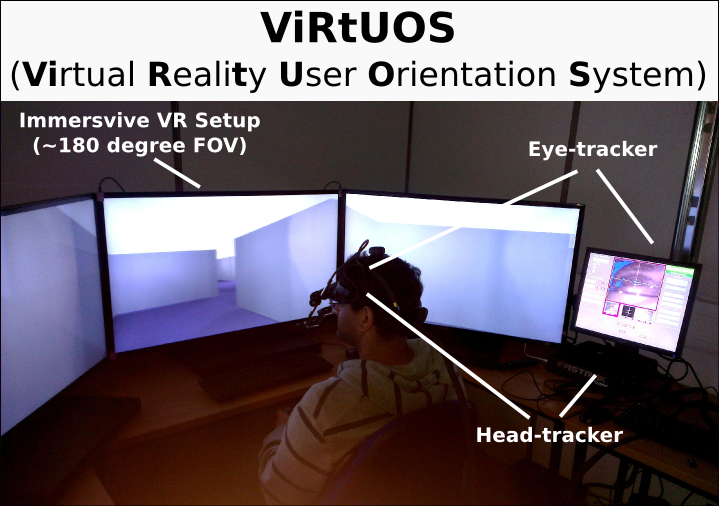
To develop ViRtUOS we have brought together undergraduate RAs from Computing, Creative Technology and Computer Animation to work co-operatively and as part of a high-level, well-resourced multi-disciplinary team.
This video demonstrates the results of their excellent work:
CLICK HERE TO VIEW; http://www.youtube.com/watch?v=w1oo6JXWNuY
So far, this FIF project has been a great success and feedback from the students RAs suggests that they have enjoyed this unique student experience and that working in an inter-disciplinary team has helped them improve their skills.
Excerpts from students’ feedback:
“I enjoyed working on a project which is not exactly ordinary in my field, and working with people who come from different professional backgrounds. It was interesting to see how contrasting subjects tie into the same workflow to try and produce a coherent product. Personally, I am glad to take away new knowledge about my own study subject and the ones of my fellow colleagues; most of that knowledge I will surely apply in my last year of study.” Jurate Pozeraite (Computer Animation, Media School)
“I’ve learnt a lot in my time here, which will be invaluable for both my final year project and my future career. I’ve learnt not only about software development, but about modelling, developing reliable systems, working as a team to produce a joint system and error handling and bug fixing. I feel that working with other students, in a similar position to myself, really helped me in this project. They made me feel at ease and they helped me learn about their roles in developing this system, which otherwise I would have completely ignored. Overall I feel that for me personally this was a very worthwhile project, for expanding my experience and learning something new. I would love to continue my work with this project for as long as possible.” William Chappell (Computing, DEC)
“During the full length of the project I had learnt more and more, I think that this was the best opportunity I have had in a long time. This job gave me lots of experience with people from different schools, which have completely different perspectives. They are both brilliant in their profession and I have learned a lot from them. Also I hope they have learned some things from me. Generally, I have gained new skills including working with ‘Vizard 4.0’ software and ‘3DsMax’. In fact, the project was really interesting and I was glad to not only earn experience from it but also produce a good quality product at the end. Overall I am very happy that I get a chance to work with such a wonderful team. It was a great experience that improves my skills for future projects. If I had a chance to go back in time and redo this project again I will definitely do it.” Arkadiusz Szerszmidt (Creative Technology, DEC)
We believe that ViRtUOS has great potential to also foster other inter-disciplinary collaborations within BU and we would like to invite academics and students from across BU to get in contact with us, visit the laboratory and explore its potential for their research interests.
The further development of ViRtUOS will be driven by two PhD projects that started in October this year and we are planning to run first experiments investigating spatial orientation in people with dementia soon.

The team, from left to right: Arkadiusz Szerszmidt (undergraduate RA, Creative Technology), William Chappell (undergraduate RA Computing), Mary O’Malley (PhD student, Psychology & BUDI), Mariela Gaete-Reyes (BUDI), Jurate Pozeraite (undergraduate RA, Computer Animation), Chris Ramsey (PhD student, CDE), Jan Wiener (Psychology & BUDI)
CLICK HERE TO VIEW THE VIDEO !!!
By Mariela Gaete-Reyes & Jan Wiener
Carers Forum 2013
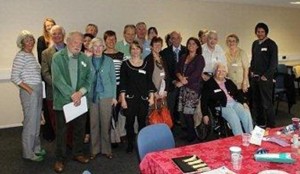
We all have a role to play in developing a dementia friendly society and the Bournemouth University Dementia Institute (BUDI) did exactly that by hosting their second Carers Forum. There are now 800,000 people with dementia in the UK and there are an estimated 670,000 family and friends acting as primary carers. Many people living with dementia and their careers are still not living well with the condition, and their quality of life remains extremely varied.
The BUDI annual carers forum was held in September and built on the success of last year’s event. Carers of people with dementia need access to quality services that will give them the information, advice, support, and care as and when they need it. This can range from help with future planning and financial advice, to moving into a residential home and receiving care with everyday tasks, and end of life care. The forum provides an environment for carers from across Dorset to come together and share their experiences, exchange knowledge, ask questions and gain support regarding these issues.
The theme of this year’s forum was to explore if the experiences of carers has changed in the last twelve months, with the aim of finding out what they feel the key issues are in terms of dementia services locally; and to gather their views about future work that BUDI should prioritise under our remit of research, service evaluation, consultancy and education.
We had return forum members who attended last year and also carers who participated for the first time. After a cup of tea and cake (or fruit for those of us trying to be healthy) the day kicked off with an introduction by Professor Anthea Innes who provided an overview of what carers highlighted as their key priorities at last years forum and how BUDI has responded to this:
Priority One: A directory of services, support and sources of information for people with dementia and their carers
Action: The free ‘Living well with memory loss and dementia in Dorset’ booklet has been produced by NHS Dorset Commissioning Group and Dorset HealthCare. A copy was given to carers who attended the forum.
Priority Two: Information guide for carers which provides support and resources
Action: To develop a carers support resource pack. The development of the pack started in October 2013 following successful fund raising by the BU fund raising team.
Priority Three: Carers wanted to know what action is being taken in Dorset regarding the Health Services (i.e. GPs), diagnosis and subsequent support / services offered.
Action: Sarah Howard (Primary Care Dementia Facilitator) was a guest speaker at this year’s Carers Forum. Sarah addressed the issues in Dorset and what action is being taken.
Carers were then asked to form three breakout groups, each being faciliated by a member of BUDI staff. The groups provided a platform for carers to discuss their experiences over the last 12 months, what their key concerns are, and what they would like to see BUDI do to address their concerns in the future. The groups offered a chance to discuss topics in more depth and to ensure everyone had the opportunity to contribute. Feedback from the groups highlighted that experiences were very individual with some carers having a very positive journey through receiving lots of information and support, whilst other journeys were not so good. However, the majority of carers recognised that an improvement in services and support was noticeable in the last twelve months.
There were lots of examples of difficulties encountered after receiving a diagnosis:
- a lack of sign posting to access help and support, especially from the GP
- a lack of understanding by the Police when a person with dementia goes missing
- a lack of knowledge about legal processes and guidance, which includes power of attorney and care planning for the later stages of a person’s dementia journey
- a lack of support to assist with revoking a driving licence from a person with dementia
- a lack of dementia friendly environments which includes appropriate sign posting to toilets, contrasting bright colours etc.
- a lack of awareness about the needs of those living with dementia by organisations / people who deal with the general public when a person with dementia uses their services
- a lack of clear guidelines for means-testing
- a lack of understanding about the most positive way to communicate with someone who has dementia
- a lack of understanding from hospitals regarding appointment time duration for carers needing to get back home to a person living with dementia.
When we asked carers what they thought BUDI should be focusing our work on, the top three ideas to develop are:
- providing easy-to-understand information for carers about legal processes and guidance
- developing dementia friendly environments and staff awareness
- improving the journey of people with dementia and their carers when they access their GP and hospital services
We knew from previous experience of working with carers that it was important to have a space for their relative with dementia to also be able to attend. Four carers brought their relative with them and BUDI and BU colleagues with experience in working directly with people with dementia offered a range of activities, as well as the opportunity to share their experiences and thoughts about memory loss and what they felt was important about living with dementia; the discussion highlighted the importance of family and being able to talk to peers – the space we had created during our carers forum offered the opportunity to have this peer discussion.
The activities that we offered that were most popular with those with dementia were the cupcake decorating and the Nintendo WII and the Apple iPad. Technology is often rarely offered to people with dementia based on negative expectations of the ability of people with dementia to be able to learn new skills and to engage with gaming technologies however it provided some of the people with dementia the opportunity to get in some additional practice before their next Technology club session that we are in the process of setting up thanks to more funding from Bournemouth Borough Council.
Unmanned Technology:key to success or limiting factor – moral and legal issues arising from the use of UAV drones in Afghanistan
Sascha-Dominik Bachmann, Associate Professor, Dep Law, EBC, addressed this year’s NATO JAPCC Joint Air & Space Power Conference 2013 – Air Power Post-Afghanistan.
JAPCC’s annual Conference provided a forum for critical discussion of themes arising from military Air Power and the ramifications of the anticipated 2014 cessation of NATO-led combat operations. The Conference was organized by the Joint Air Power Competence Centre and led by Air Marshal David Walker, RAF (http://www.japcc.de/fileadmin/user_upload/events/Conference/2013/2013-03-25-JAPCC_Conf_2013_Flyer_web.pdf).
Sascha reflected on the legal and moral issues arising from Targeted killing by drones (using Unmanned Aerial Vehicles (UAV) or Unmanned Combat Aircraft Systems (UCAS) as weapon platforms) which has become an increasingly debated subject. Criticism is not only directed against its overall legality and legitimacy, but also its negative impact on the theatre state as a sovereign state in cases of extraterritorial strikes, a potential lack of efficiency, and a growing uneasiness with its morality. It seems there has been a change in how targeted killing is viewed. Apart from a growing discomfort with civilian ‘collateral’ casualties, there is growing concern about its effectiveness and the acceptance of targeted killing as a new form of warfare. Ben Emmerson, the newly appointed UN Special Rapporteur on Human Rights and Counterterrorism, has called for more transparency and accountability when employing this form of warfare. – See more at: http://blog.oup.com/2013/06/drone-targeted-killings-pil/#sthash.Kky1JmWv.dpuf
 “Kip on the Beach”
“Kip on the Beach”


















 FHSS academics teaching in Nepal
FHSS academics teaching in Nepal New weight change BU paper
New weight change BU paper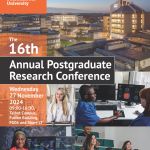 One week to go! | The 16th Annual Postgraduate Research Conference
One week to go! | The 16th Annual Postgraduate Research Conference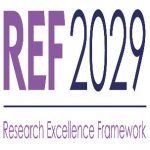 Geography and Environmental Studies academics – would you like to get more involved in preparing our next REF submission?
Geography and Environmental Studies academics – would you like to get more involved in preparing our next REF submission?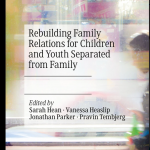 Congratulations to three former BU staff
Congratulations to three former BU staff MSCA Staff Exchanges 2024 Call – internal deadline
MSCA Staff Exchanges 2024 Call – internal deadline Applications are now open for 2025 ESRC Postdoctoral Fellowships!
Applications are now open for 2025 ESRC Postdoctoral Fellowships! Horizon Europe – ERC CoG and MSCA SE webinars
Horizon Europe – ERC CoG and MSCA SE webinars MaGMap: Mass Grave Mapping
MaGMap: Mass Grave Mapping ERC grants – series of webinars
ERC grants – series of webinars